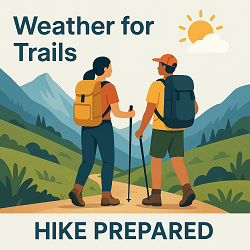Fort Spring, WV Weather Forecast and Current Conditions

Feels Like 39°F
Current Weather

Feels Like 39°F
Forecast at a Glance







This Date in Weather History
1989 - Thunderstorms developing along a stationary front produced very heavy rain in the central U.S. Thunderstorms during the late morning and afternoon produced five to nine inches of rain around Lincoln NE, with an unofficial total of eleven inches near Holmes Park. Up to six and a half inches of rain soaked northern and western Iowa. Eighty to ninety percent of the homes in Shenandoah IA, where 5.89 inches of rain was received, reported basement flooding.
More on this and other weather history
Fort Spring 7 Day Weather Forecast Details
Monday Sep 8

Day: Sunny, with a high near 73. East wind around 3 mph.

Night: Clear, with a low around 41. East wind around 3 mph.
Tuesday Sep 9

Day: Sunny, with a high near 73. East wind 1 to 5 mph.

Night: Mostly clear, with a low around 43. East wind 0 to 3 mph.
Wednesday Sep 10

Day: Sunny, with a high near 77.

Night: Clear, with a low around 46.
Thursday Sep 11

Day: Sunny, with a high near 80.

Night: Clear, with a low around 49.
Friday Sep 12

Day: Sunny, with a high near 80.

Night: Mostly clear, with a low around 50.
Saturday Sep 13

Day: Sunny, with a high near 80.

Night: Mostly clear, with a low around 50.
Sunday Sep 14

Day: Mostly sunny, with a high near 81.
Sun & Moon Monthly
Sunrise 6:59 AM
Sunset 7:42 PM
Last Light 8:09 PM
Moonset 7:46 AM

Contiguous United States Extremes
Sun's High Temperature
112 at Stovepipe Wells, CA
Sun's Low Temperature
28 at 2 Miles East Southeast Of Hazen, ND
Weather Folklore
When clouds are upon the hills, they'll come down by the mills.
Current subscribers - login to your ClearSky account
About Fort Spring, West Virginia
Fort Spring is an unincorporated community and town in Greenbrier County, West Virginia, United States, situated along the Greenbrier River within the Greenbrier River Watershed. It was once a major segment of the Chesapeake and Ohio Railway's "Gravel Girtie" route between Hinton in Summers County to Clifton Forge, Virginia. The name is derived from its main export; Mississippian limestone from Snowflake Quarry, sent to Clifton Forge for further transshipment. The main road going through the small town was once the original rail line, which was re-located.
Fort Spring was originally called "Mann's Ferry" and the community's current name refers to the old settler fort that has been lost to history. The rock cliff, or bluff, seen just prior to the primary two train tunnels when traveling eastward, was named 'Wilson's Bluff' due to a family settled there. Colonel John Stuart, who once commanded the old fort as well as shipped Ice Age sloth bones (Megalonyx jeffersonii) to Thomas Jefferson, noted the presence of saltpetre caves in the area. The area is a combination of karst topography, riparian floodplain and ancient riverbeds with limestone (karst) outcropping mixing with farmlands and deciduous forest. Drinking water is not from the nearby river but by drilled wells, rainwater cisterns or transported from elsewhere.
Due to recent West Virginia tourism promotions, Fort Spring is known as a set-in point for kayaks and other boats used on day trips to the nearby town of Alderson.
Content from Wikipedia, licensed under CC BY-SA 3.0.

